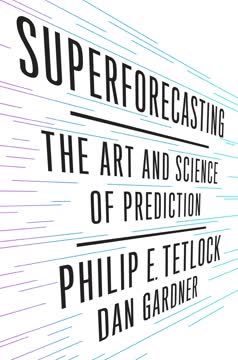가지 주요 요점
1. 복잡 적응 시스템: 예측 불가능한 이해
복잡성 자체가 효과적인 적응을 촉진하는 기술을 허용한다.
불확실성 수용하기. 복잡 적응 시스템(CAS)은 다수의 상호작용하는 에이전트, 출현 속성, 예측의 어려움으로 특징지어진다. 이러한 시스템은 생물학, 경제학, 사회 조직 등 다양한 분야에서 발견된다. CAS를 이해하려면 전통적인 선형 사고에서 벗어나 시스템 구성 요소의 상호 연결성을 인정하는 보다 전체론적인 접근이 필요하다.
주요 특징:
- 다수의 상호작용하는 에이전트
- 비선형 관계
- 출현 속성
- 적응 행동
- 예측의 어려움
이러한 특징을 인식함으로써 관리자와 정책 입안자들은 시스템의 고유한 복잡성과 함께 작동하는 전략을 개발할 수 있다.
2. 복잡성 활용: 행동을 위한 프레임워크
이 책의 논지는 복잡성을 활용할 수 있다는 것이다.
새로운 접근법. 복잡성을 제거하거나 통제하려는 대신, 저자들은 이를 활용하기 위한 프레임워크를 제안한다. 이 접근법은 변이, 상호작용, 선택의 세 가지 주요 프로세스에 중점을 둔다. 이러한 프로세스를 이해하고 영향을 미침으로써, 의사 결정자들은 완전한 통제나 예측 없이도 복잡한 시스템을 원하는 결과로 이끌 수 있다.
프레임워크 구성 요소:
- 변이: 다양성 창출 및 유지
- 상호작용: 연결 패턴 형성
- 선택: 성공적인 전략 증폭
이 프레임워크는 복잡한 상황을 체계적으로 분석하고 불확실성 속에서도 유망한 행동 가능성을 제안하는 방법을 제공한다.
3. 변이: 적응의 원재료
변이는 적응을 위한 원재료를 제공한다.
다양성 촉진. 복잡한 시스템에서 다양성은 적응과 혁신에 필수적이다. 그러나 다양성과 균일성 사이의 균형이 필요하다. 너무 많은 다양성은 혼란을 초래할 수 있고, 너무 적으면 정체를 초래할 수 있다. 관리자와 정책 입안자들은 시스템 내에서 다양성을 창출, 유지, 파괴하는 메커니즘을 고려해야 한다.
변이의 출처:
- 오류를 포함한 복제(돌연변이)
- 기존 요소의 재조합
- 새로운 에이전트나 전략 도입
이러한 변이의 출처를 의식적으로 관리함으로써, 조직은 변화하는 환경에 대한 적응 능력과 회복력을 향상시킬 수 있다.
4. 상호작용: 패턴과 결과 형성
상호작용은 시스템 내에서 관심 있는 사건이 에이전트 간의 상호작용과 인공물과의 상호작용에서 발생하기 때문에 우리 프레임워크에 필수적이다.
연결 패턴. 복잡한 시스템에서 에이전트가 상호작용하는 방식은 시스템의 행동과 결과에 깊은 영향을 미친다. 상호작용 패턴은 근접성, 활성화, 물리적 및 개념적 공간의 구조와 같은 요인에 의해 형성된다. 이러한 패턴을 이해하고 영향을 미침으로써, 관리자는 직접적인 통제 없이 시스템 행동을 안내할 수 있다.
주요 개념:
- 근접성: 에이전트가 상호작용할 가능성을 높이는 요인
- 활성화: 에이전트 활동의 타이밍에 영향을 미치는 프로세스
- 공간: 상호작용을 구조화하는 물리적 및 개념적 환경
이러한 요인을 조작함으로써 시스템 전체에 이익이 되는 출현 속성과 자기 조직화 행동을 유도할 수 있다.
5. 선택: 성공 증폭과 실패 제거
선택 프로세스는 복잡 적응 시스템에서 성공의 증폭과 실패의 제거를 주도한다.
진화 형성. 선택 메커니즘은 어떤 에이전트나 전략이 복제, 수정 또는 제거될지를 결정한다. 이 과정은 복잡한 시스템에서 적응과 개선의 중심이다. 효과적인 선택은 성공 기준의 명확한 정의, 적절한 공로 인정, 새로운 에이전트나 전략을 창출하는 메커니즘을 필요로 한다.
선택의 구성 요소:
- 성공 기준 정의
- 선택 수준 결정(에이전트 대 전략)
- 성공과 실패에 대한 공로 인정
- 새로운 에이전트나 전략 창출
이 구성 요소를 신중하게 설계하고 관리함으로써, 조직은 복잡한 환경에서 학습하고 적응하는 능력을 향상시킬 수 있다.
6. 탐색 대 활용: 혁신과 효율성의 균형
복잡성에 대한 우리의 지식을 사용하여 더 나은 성과를 내는 것이 목표이다.
전략적 균형. 복잡한 시스템에서 근본적인 도전 과제는 탐색(새로운 가능성 모색)과 활용(알려진 전략 활용)의 균형을 맞추는 것이다. 이 균형은 생물학적 진화에서부터 조직 전략에 이르기까지 다양한 맥락에서 존재한다. 장기적인 성공과 적응을 위해 올바른 균형을 찾는 것이 중요하다.
탐색을 선호하는 요인:
- 장기적이거나 광범위한 문제
- 빠르고 신뢰할 수 있는 피드백
- 탐색으로 인한 재앙의 낮은 위험
- 현 상태에서의 임박한 재앙
관리자는 새로운 전략을 탐색하는 데 얼마나 투자할지 기존 전략을 활용하는 데 얼마나 투자할지 결정할 때 이러한 요인을 고려해야 한다.
7. 공로 인정: 성공과 실패로부터 배우기
적응형 에이전트가 빠르게 변화하는 환경에서 살 때, 그들은 다른 에이전트를 보며 어떤 성과 측정이 작동하고 어떤 것이 실패하는지 확인하는 경향이 있다.
효과적인 학습. 복잡한 시스템에서는 성공에 대한 공로를 정확히 인정하거나 실패에 대한 비난을 정확히 하는 것이 종종 어렵다. 그러나 공로 인정을 위한 효과적인 방법을 개발하는 것은 학습과 개선에 필수적이다. 조직은 성공의 세밀한 측정과 불가피한 공로 인정 오류를 처리하는 전략을 개발함으로써 학습 능력을 향상시킬 수 있다.
공로 인정 접근법:
- 세밀하고 단기적인 성공 측정 사용
- 예상보다 나은 또는 나쁜 결과에서 배우기
- 시뮬레이션을 통한 대리 경험 개발
공로 인정을 개선함으로써, 조직은 복잡한 환경에서 학습과 적응을 가속화할 수 있다.
8. 복잡한 시스템에서의 리더십: 모범과 기준 설정
리더가 하는 일은 특히 다른 사람들이 모방할 가능성이 높다.
가시성을 통한 영향력. 리더는 성공적인 전략을 시연하고 유익한 규범을 확립함으로써 복잡한 시스템을 형성하는 데 중요한 역할을 한다. 이러한 영향력은 표준을 설정하고 성공을 시연하며 유익한 규범을 확립하는 능력에서 비롯된다. 복잡한 시스템에서 효과적인 리더는 이 가시성을 활용하여 조직을 안내하는 방법을 이해하고 있다.
리더가 영향을 미치는 방법:
- 다른 사람들에게 인센티브를 제공하는 표준 설정
- 성공적인 전략이나 성과 측정 시연
- 커뮤니티 내 유익한 규범 확립
가시적인 리더십을 의식적으로 행사함으로써, 관리자는 복잡한 환경에서 적응과 성공을 촉진하는 방식으로 조직의 행동과 가치를 형성할 수 있다.
마지막 업데이트 날짜:
FAQ
What is "Harnessing Complexity" by Robert Axelrod and Michael D. Cohen about?
- Exploring Complex Adaptive Systems: The book examines how organizations and social systems function as Complex Adaptive Systems (CAS), where many agents interact, adapt, and evolve in unpredictable ways.
- Framework for Action: It provides a practical framework for managers and policymakers to harness, rather than eliminate, complexity for productive ends.
- Interdisciplinary Approach: Drawing from evolutionary biology, computer science, and social design, the authors synthesize insights to address real-world organizational and policy challenges.
- Focus on Variation, Interaction, Selection: The book is structured around three central processes—variation, interaction, and selection—that drive adaptation and change in complex systems.
Why should I read "Harnessing Complexity" by Axelrod and Cohen?
- Practical Guidance for Uncertainty: The book offers actionable strategies for thriving in environments where prediction and control are difficult due to complexity.
- Bridges Theory and Practice: It moves beyond metaphor, providing explicit methods and questions to apply complexity science to organizational and policy design.
- Relevant Across Fields: Whether you’re in business, government, or social policy, the concepts are applicable to a wide range of complex, adaptive challenges.
- Timely Insights: With the rise of the Information Revolution and rapid technological change, understanding how to harness complexity is more relevant than ever.
What are the key takeaways from "Harnessing Complexity" by Axelrod and Cohen?
- Complexity as an Asset: Complexity is not just a liability to be controlled; it can be harnessed for innovation, adaptation, and improvement.
- Population Approach: Viewing systems as populations of diverse agents and strategies helps identify leverage points for change.
- Balance Exploration and Exploitation: Effective adaptation requires balancing the creation of new possibilities (exploration) with the refinement of existing ones (exploitation).
- Interventions Matter: Deliberate changes to variation, interaction patterns, and selection criteria can channel complexity toward desirable outcomes.
How do Axelrod and Cohen define a Complex Adaptive System in "Harnessing Complexity"?
- Populations of Agents: A CAS consists of multiple agents (individuals, organizations, or even software) that interact with each other and their environment.
- Adaptive Strategies: Agents use and modify strategies based on experience, imitation, and trial-and-error learning.
- Emergent Properties: System-level behaviors and structures emerge from local interactions, often in ways that are hard to predict from the parts alone.
- Continuous Coevolution: As agents adapt, they change the context for others, leading to ongoing, dynamic coevolution within the system.
What is the main framework or method proposed in "Harnessing Complexity" by Axelrod and Cohen?
- Three Key Processes: The framework centers on variation (generating diversity), interaction (patterns of agent contact), and selection (amplifying success).
- Population Perspective: It emphasizes analyzing populations of agents and strategies, not just individual actors or static structures.
- Guiding Questions: The authors provide a set of questions to systematically analyze and intervene in complex systems, focusing on leverage points.
- Active, Not Predictive: The method is about guiding action and adaptation, not making detailed predictions or seeking total control.
How does "Harnessing Complexity" by Axelrod and Cohen distinguish between complexity and chaos?
- Complexity Involves Structure: Complexity refers to systems with many interacting agents, where structure and adaptation are possible, even if prediction is hard.
- Chaos Is Disorderly: Chaos deals with highly sensitive, turbulent systems (like weather) that quickly become disordered and unmanageable.
- Potential for Improvement: Complex systems, unlike chaotic ones, often allow for thoughtful intervention and improvement through understanding interaction patterns.
- Emergence vs. Randomness: Complexity is about emergent properties from structured interactions, not just randomness or lack of order.
What are the roles of variation, interaction, and selection in "Harnessing Complexity" by Axelrod and Cohen?
- Variation: Provides the raw material for adaptation; diversity among agents and strategies is essential for innovation and resilience.
- Interaction: Determines who or what interacts with whom, shaping the flow of information, resources, and influence within the system.
- Selection: Amplifies successful agents or strategies and culls less effective ones, driving adaptation and change over time.
- Interdependence: These processes are interlocking; changes in one affect the others, creating dynamic feedback loops.
How does "Harnessing Complexity" by Axelrod and Cohen advise balancing exploration and exploitation?
- Trade-off Principle: Too much exploration (novelty) leads to disorder and missed opportunities to capitalize on what works; too much exploitation (uniformity) risks stagnation and vulnerability.
- Context Matters: The right balance depends on factors like feedback speed, risk of catastrophe, and the potential for widespread application of improvements.
- Encourage Variety When Needed: Exploration is especially valuable for long-term, widespread, or high-risk problems, or when disaster looms.
- Mechanisms for Balance: Use organizational routines, feedback systems, and structural interventions to maintain an adaptive balance.
What practical examples does "Harnessing Complexity" by Axelrod and Cohen use to illustrate its concepts?
- Grameen Banking: Harnesses village social networks to provide microcredit, leveraging existing complexity for economic development.
- Linux Open Source Development: Shows how massive variety and decentralized contributions can be managed for high-quality outcomes.
- Social Capital in Italy: Demonstrates how patterns of interaction and trust networks foster economic and governmental success.
- AIDS Research: Highlights the importance of nonrandom interaction patterns in understanding and intervening in disease spread.
How does "Harnessing Complexity" by Axelrod and Cohen address the Information Revolution?
- Accelerates Complexity: Information technology reduces barriers to interaction, increasing the complexity and interdependence of social and technical systems.
- Enables Rapid Adaptation: Advances in information processing, storage, and communication allow for faster feedback and adaptation.
- Creates New Challenges: While offering opportunities for improvement, the Information Revolution also introduces risks like systemic failures and loss of diversity.
- Framework Relevance: The book’s framework is especially suited to analyzing and intervening in the fast-changing, interconnected world shaped by information technology.
What are the main questions to ask when applying the "Harnessing Complexity" framework by Axelrod and Cohen?
- Identify Agents and Strategies: Who are the agents, and what strategies and artifacts do they use?
- Analyze Populations and Types: What populations exist, and how are types (categories) defined and maintained?
- Examine Variation and Interaction: How is variety created and destroyed? What are the patterns of interaction, and how can they be changed?
- Assess Selection and Success Criteria: What criteria are used for selection? Is selection acting on agents, strategies, or both, and how can it be harnessed for adaptation?
What are the best quotes from "Harnessing Complexity" by Axelrod and Cohen, and what do they mean?
- “Throw with your opponent’s own weight.” – This judo metaphor encapsulates the book’s philosophy: use the inherent dynamics of complexity to your advantage, rather than fighting against them.
- “Complexity can be harnessed.” – The central thesis: complexity is not just a problem to be solved, but a resource to be used for innovation and improvement.
- “In a world of mutually adaptive players, even though prediction may be difficult, there is quite a bit that you can do.” – Emphasizes that action and adaptation are possible even when the future is uncertain.
- “The purpose of this book is to help managers and policy makers harness complexity.” – Clarifies the book’s practical intent: to provide tools and frameworks for real-world decision-makers.
리뷰
복잡성을 활용하기는 평균 평점 3.72/5로 다양한 평가를 받고 있다. 독자들은 복잡 적응 시스템에 대한 통찰력과 복잡성을 관리하기 위한 프레임워크를 높이 평가한다. 일부는 복잡한 환경에서의 의사결정을 이해하는 데 있어 깊이 있고 유용하다고 생각한다. 그러나 비평가들은 책의 프레젠테이션이 도전적일 수 있으며, 중요한 포인트가 덜 관련된 세부 사항에 묻혀 있는 경우가 있다고 지적한다. 일부는 이 책을 훌륭한 개요서로 간주하지만, 다른 사람들은 너무 이론적이고 실용적인 응용이 부족하다고 느낀다. 이 책은 일반적으로 복잡 시스템에 대한 입문서로 추천된다.











